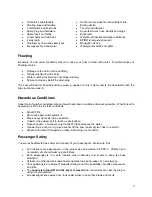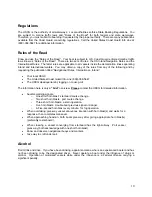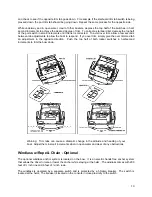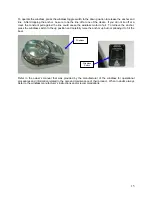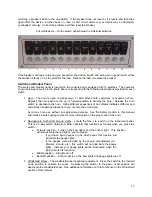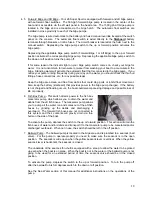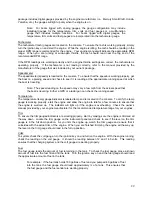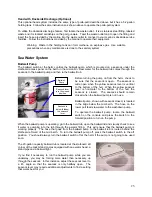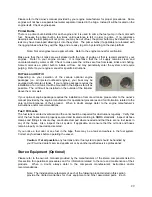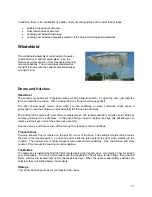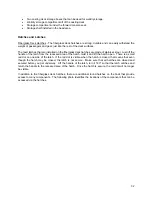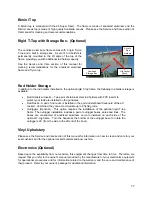
package includes digital gauges provided by the engine manufacturer (i.e., Mercury SmartCraft, Honda,
Yamaha, etc.), the gauges will light up only when the engine is on.
Note: For boats rigged with analog gauges, the gauge configuration may include
individual gauges for the temperature, trim, volts and fuel gauges or a multifunction
gauge that includes multiple functions. For boats rigged with digital gauges, the
temperature, trim, volts and fuel gauges are incorporated into the tachometer gauge.
Tachometer
The tachometer (tach) gauges are located on the console. To ensure the tach is working properly, simply
turn the ignition key on and start the engine. While the engine is idling, the tach should be reading in the
proper RPM range recommended for the engine. Your engine manual will indicate the appropriate RPM
range. When you are running at wide-open throttle, the tach should read near the top end of the
recommended RPM range.
If the RPM readings are working correctly and the engine throttle settings are correct, the tachometer is
operating properly. If the tachometer is not reading correctly, refer to the manual provided by the
manufacturer of the gauge that was included in your owner’s package.
Speedometer
The speedometer (speedo) is located on the console. To ensure that the speedo is working properly, get
the boat on a planing speed and check to see if it is reading at the approximate running speed at which
the boat is traveling.
Note: The speed-reading on the speedo may vary a few mph from the actual speed that
the boat is traveling. Either a GPS or a radar gun can check the running speed.
Temperature
The temperature (temp) gauge/indicator is labeled temp and is located on the console. To verify the temp
gauge is working properly, start the engine and allow the engine to idle for a few minutes to ensure that
the engine is warmed up. The indicator will light up if the engine is overheating. Check the owner’s
manual provided by your engine manufacturer for the recommended temperature range for your engines.
Trim
To ensure the trim gauges/indicators are working properly, start by making sure the engine is trimmed all
the way down. Locate the trim gauge on the instrument panel and check to see if the level on the trim
gauge is in the full down position. As you trim the engine up, watch the trim gauge and ensure that it
coincides with the actual trim of the engine. When you are finished trimming the engine all the way up,
the level on the trim gauge should read in the full up position.
Volts
To system check the volt gauge, turn the ignition key on and turn on the engine. With the engine running,
check the reading on the volt gauge. It should be reading between 12 and 14.5 volts. This reading
ensures that the charging system and the volt gauge are working properly.
Fuel
The fuel gauge reads the amount of fuel remaining in the tank. To check the fuel gauge, place a known
amount of fuel into the fuel fill and fill the tank. Turn the ignition key on and the fuel gauge should read
the approximate amount of fuel in the tank.
For example: If the fuel tank holds 160 gallons of fuel and you pumped 40 gallons of fuel
into the tank, the fuel gauge should read approximately ¼ of a tank. This ensures that
the fuel gauge and the fuel sender are working properly.
22


